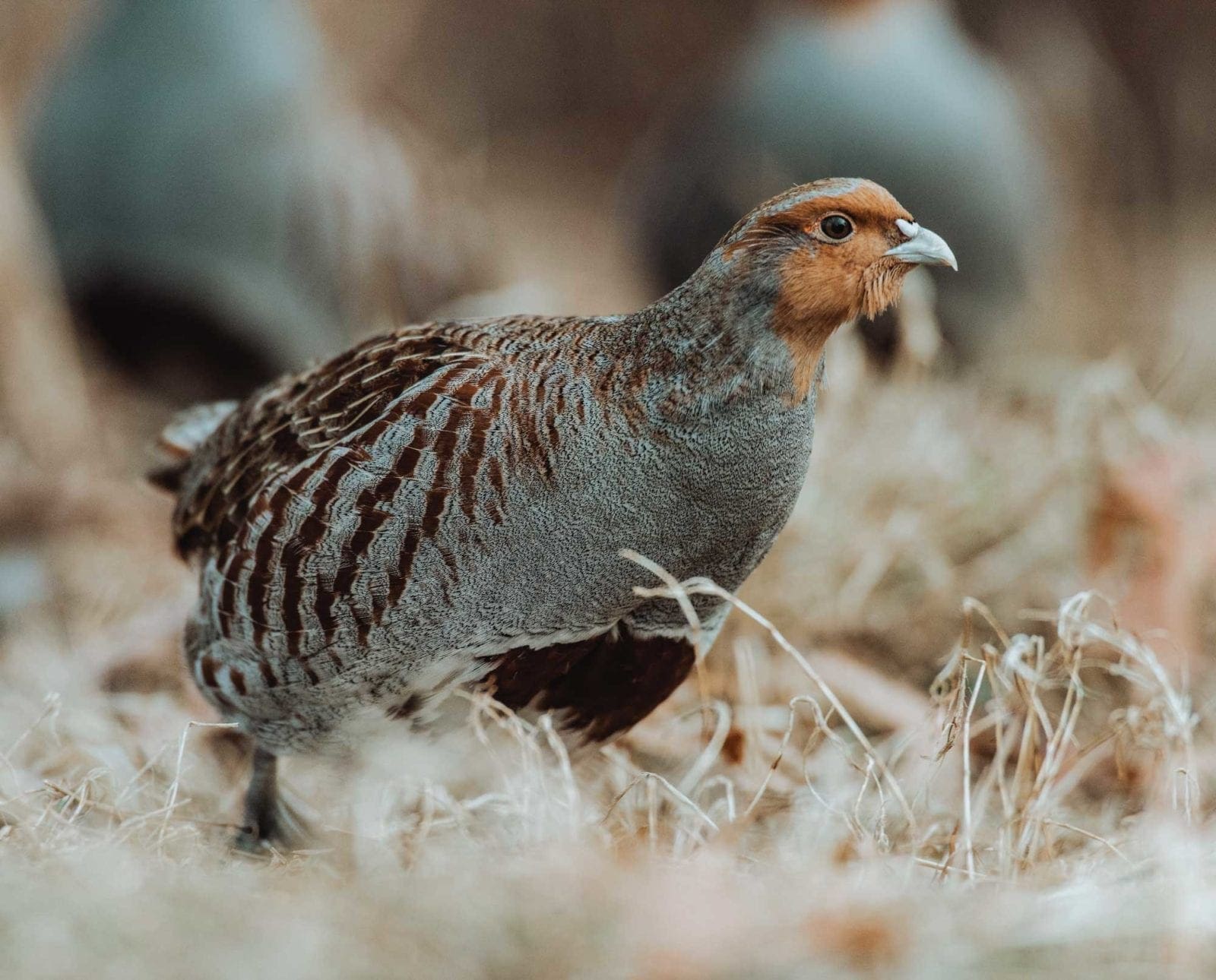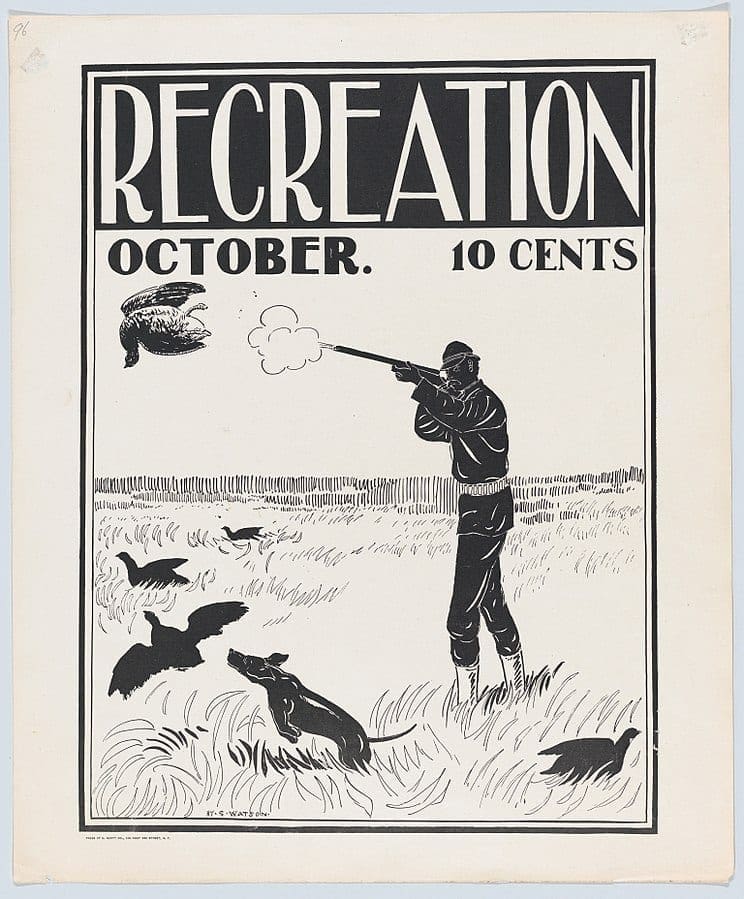Home » Partridge Species » Hungarian Partridge Hunting » Wild Hungarian Partridge Hunting in New York
Wild Hungarian Partridge Hunting in New York

Edgar Castillo is a recently retired law enforcement officer for…
There was a time when wild Huns were a bird of the Eastern United States and New York had populations that thrived.
Most upland bird hunters know the Hungarian or Gray Partridge was successfully imported and thrived in several Western states, such as Wyoming, Montana, Oregon, Washington, the Dakotas, and a few others. States such as Nebraska, Wisconsin, and Iowa are lesser known locations where “Huns” were also introduced and still provide an opportunity to hunt.
Notably, the son-in-law of Benjamin Franklin attempted to establish Gray Partridge populations in New Jersey in the late 18th century. Attempts to introduce Hungarian Partridge were also made in several states along the east coast in the early 1900s. Nearly 40,000 partridges were imported to America between 1908 and 1909 alone. The excitement to fill our country’s covers was widespread among sportsmen.
There were small success stories here and there, but generally Huns did not take to the land and habitat of the eastern seaboard. Huns require somewhat open fields to flourish. Acceptable habitat could include grasslands, agricultural crop fields such as wheat and hay with areas that can provide cover.
One state that aggressively pursued a population of Huns for sportsmen was New York. The state released birds for years in the hopes of them establishing a foothold. Initial reports were that the Hungarian Partridge were hearty and surviving. There was great hope for the birds to thrive. The New York Times published several articles about the European game bird. With such optimistic titles as “Hungarian Birds Flourish Here; Partridges Introduced by State Conservation Adapt Themselves to New York Conditions are Multiplying” (1929), one would naturally assume that hunting Huns in the upper northeastern United States was all but inevitable.
Indeed, New York did have a state hunting season for several decades, not with preserve birds, but wild Perdix perdix!
“Eastern Homeland of the Hun” by Jerome B. Robinson in the 1970 September issue of Field & Stream, describes the northwestern portion of New York state as rolling farm country cut into squares. Along the shores of Lake Ontario are three counties where the Hungarian partridge is established. Robinson asserted that the numbers are the largest concentrations of Huns in the eastern United States and few hunters have yet to discover such opportunity.
Robinson tells of a hunting trip in 1968 outside of Watertown, NY, where he was accompanied by two hunters and four bird dogs. While driving down a country road, a covey of about a dozen Huns crossed their path. As the car stopped, the birds flushed and landed in a nearby wheat stubble field. Minutes later the hunters were walking a wet clover field behind English Setters. Four coveys were pointed by dogs on their first day of hunting. The author was astonished to be hunting Huns in the state of New York as opposed to the Dakotas or Canadian prairies.
The article goes on to say the Hungarian Partridge population had been well established since the 1930s. During 1927 and 1932, the state’s department of conservation imported over 27,500 Huns. The stocking of the birds was stopped after it appeared the Hungarian partridge did not take. However, surveys conducted in 1952 showed the birds had survived and established themselves in the flat farmland of three counties: Jefferson, St. Lawrence, and Franklin. Their numbers were sufficient for an open hunting season that same year. Huns in great numbers were described in all the townships in the area. It was estimated that Hungarian Partridge outnumbered pheasants 30 to 1!
Robinson’s article enticed bird hunters to upstate New York to pursue Huns in the farmlands and small grain fields. It had the allure of a vacation brochure, entrancing readers with the promise of dogs on point on a covey of Huns and the wing-beats of an exotic prey.
Robinson ascribed the birds’ successful adaption to the dry climate during nesting season, extensive croplands, lack of competition from other game birds, and the very light hunting pressure. The article insisted that farmers readily granted permission to hunt their lands and warned prospective hunters to fill their pockets with shells and be ready for “…the most exciting game bird hunting of your life.”
Sadly, it appears the Hungarian Partridge of New York ultimately met the same fate of most attempted introductions of game bird: it failed. It was the yearly loss of habitat that brought an end for the Hungarian Partridge. From a sequence of aerial photographs and ground censuses taken in 1941 and periodically thereafter until 1963, the New York State Conservation Department determined the loss of habitat and change in agricultural practices, Hungarian Partridges began to disappear from their earlier established range, though pockets of huntable numbers still thrived in the St. Lawrence River lowlands.
As habitat continued to decrease, population dwindled and the season was adjusted in the subsequent years. According to Kingston (Kingston, NY) Daily Freeman Newspaper, the 1966-67 small game season for Huns was set for Oct. 3-22 in Clinton, Franklin, and St. Lawrence counties and Oct. 17 – Nov. 5th for Jefferson County. Daily limits varied from 3 – 4 a day. Robinson’s Field & Stream article suggested there was a huntable population of Huns in 1968. However, by 1971 the hunting season was closed for Hungarian Partridge due to the abandonment of farmland. Habitat management practices changed so much the decline of the Hungarian partridge started on a downward spiral. The hunting season would never reopen.

Hunters would have had a choice between traveling to the west or east for Huns had these European transplants continued to flourish. As a bird hunter, I cannot imagine the excitement of traipsing through the New York countryside in pursuit of ol’ Ruff himself and Mr. Timberdoodle. I imagine seeing the dog go on point only to have a blur of rust-colored, quail-sized birds flush in a frenzy.
A question to ponder is, are there remnant populations of Huns still alive going undetected? I was able to speak with individuals with first-hand accounts of seeing Huns in those three New York counties. Hunters would come across Huns while searching for ruffed grouse and American woodcock.
The introduction of nonnative species is a game of biological roulette; the outcome is unpredictable. Habitat loss challenges the survival of both native and non-native game birds here in the United States. Whether it is a major contributor or side-effect, conservation has always been important among us hunters. One could look at almost any state in the Union and discover there once was a game bird that is no longer present. States such as Illinois and Ohio once boasted of “millions” of prairie chickens; the South had bobwhite quail scattered everywhere; ruffed grouse thrived in Missouri. All these states suffered a loss of habitat that devastated their game birds. As hunters and conservationists, we must each do our part to ensure there are no more losses of our beloved game birds in states already feeling the effects of dwindling populations of sage grouse, bobwhite quail, and ruffed grouse.
References:
Gray partridge habitat use and nesting biology in north-central Iowa. Vernon Pat McCrow Iowa State University – 1982
Edgar Castillo is a recently retired law enforcement officer for a large Kansas City metropolitan agency. He also served in the United States Marine Corps for twelve years. Edgar longs for the colors of autumn and frosty, winter days so he can explore the landscapes in search of wild birds in wild places. His passion lies in the uplands as he self-documents his travels across public lands throughout Kansas hunting open fields, walking treelines, & bustin’ through plum thickets.



